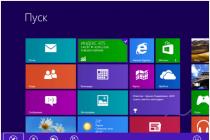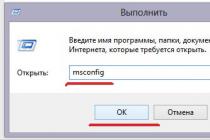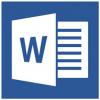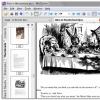In our time, a very high level of automation prevails, and this is reflected in almost all spheres of human activity. In connection with such relevance of technical progress, digital cartography has arisen, which is a computer processing and analysis of cartographic information. At the moment, it is digital cartography that is the most popular in its scientific field, since now the creation of any cartographic images is performed on a computer.
Digital mapping cannot be called a separate discipline or section. This is most likely an effective tool that allows you to conveniently and quickly process map data using a PC. However, the impact digital cartography on science is really strong, and this way displaying the area radically changed the principle of visualization of the area.
Let's compare digital cartography with the old way of making maps. In ancient times, cartographers spent days and nights at the map, drawing each element with ink. This work was very painstaking, and labor costs were simply unreasonable. Now the technology of creating maps has changed significantly, and now all the routine work is performed by the computer, and much faster. During the processing of cartographic information on a PC, special automated systems, which have great functionality, consisting of the tools needed to create maps. Because of their flexibility, automated mapping systems provide a host of options for modern cartographers that truly simplify and improve the process of mapping terrain.
8.1. The essence and objectives of the course "Digital Cartography"
The course "Digital Cartography" is an integral part of cartography. He studies and develops
the theory and methods of creating digital and electronic maps, as well as automation of maps
graphic works.
Cartography has now reached a new qualitative level. Due
with the development of computerization, many of the processes of creating maps have completely changed. Poyas
new methods, technologies and directions of mapping have emerged. Can be singled out times
personal areas in which cartography is engaged today: digital cartographer
study, three-dimensional modeling, computer publishing systems, etc. In this regard
new cartographic works appeared: digital, (electronic and virtual)
maps, animations, three-dimensional cartographic models, digital terrain models. Cro
In addition to creating computer maps, the task is to form and maintain databases of a digital cartographer
physical information.
Digital cards are inseparable from traditional cards. Theoretical basis cartographer
money accumulated over the centuries remained the same, only the technical means have changed
creating maps. The use of computer technology has led to significant changes
technologies for creating cartographic products. The technology has been simplified a lot.
completing graphic works: labor-intensive drafting, engraving and other handcrafts have disappeared.
work. As a result, all traditional drawing materials fell out of use.
and accessories. A cartographer with knowledge of software can quickly and efficiently
It is essential to carry out complex cartographic work. There are also many opportunities
perform on very high level design work: design of thematic cards,
atlases covers, title pages and etc.
With the introduction of computer technology, the processes of compiling and preparing
preparation of maps for publication. No need to make high-quality hand-made copies
compilation original (publisher's original). Design original, completed
located on a computer, it makes it very easy to edit and correct proofreading
marking without deteriorating its quality.
The advantages of computer technology are not only perfect quality
graphic works, but also high precision, a significant increase in productivity
labor, improving the printing quality of cartographic products.
8.2. Definitions of digital and electronic
cartographic works
The first work on the creation of digital maps was started in our country at the end of
70s Currently, digital maps and plans are mainly created according to the traditional
original maps and plans, compilation originals, production prints and other
cartographic materials.
Digital cards - digital models of objects presented as encoded
numerical plan coordinates x and y and applicate I.
Digital maps are logical and mathematical descriptions (representations)
mapped objects and relations between them (relations of terrain objects in the
de their combinations, intersections, proximity, different heights in relief, orientation on the side
us light, etc.), formed in the coordinates, projections,
systems of conventional signs, taking into account the rules of generalization and requirements for accuracy. Like
they differ in scale, thematic, spatial coverage, etc. on conventional maps.
The main purpose of digital maps is to serve as a basis for the formation of databases and av
tomatical compilation, analysis, transformation of maps.
By content, projection, coordinate system and heights, accuracy and layout, digital
maps and plans must fully meet the requirements for traditional
maps and plans. All digital maps must comply with topological relations.
ness between objects. In the literature, there are several definitions of digital
and electronic maps. Some of them are given in this topic.
Digital card - presentation of map objects in a form that allows com
puter to store, manipulate and display the value of their attributes.
Digital card - it is a database or file that becomes a map when
GIS creates hardcopy or image on screen
(V. Haxhold).
Electronic cards - these are digital maps visualized in a computer environment
de using software and technical means, in the accepted projections, systems
conventional signs, subject to the established accuracy and design rules.
Electronic atlases- computer analogs of conventional atlases.
Capital atlases are created using traditional methods for a very long time, tens of years.
Therefore, very often, even in the process of creation, their content becomes outdated. Electronic Atlas
sy allow to significantly reduce the time of their production. Maintaining electronic maps
and atlases up to date, their updating is currently being done very quickly
ro and qualitatively.
There are several types of electronic atlases:
Atlases for visual viewing only ("flipping") - viewer atlases.
- Interactive atlases, in which you can change the appearance, image methods
zheniya and classification of mapped phenomena, receive paper copies of maps.
- Analytical atlases (GIS atlases)
allowing you to combine and match
maps, quantify and evaluate them, overlay maps
friend.
In many countries, including Russia, National Atlases have been created and are being created.
The National Atlas of Russia is an official state publication created by
on behalf of the Government of the Russian Federation. The National Atlas of Russia gives com
a comprehensive view of nature, population, economy, ecology, history and culture
countries (Figure 8.1). The atlas consists of four volumes: volume 1 - " general characteristics territories
riy "; volume 2 - “Nature. Ecology"; volume 3 - “Population. Economy"; volume 4 - “History.
Culture ".
Rice. 8.1. National Atlas of Russia
The Atlas is published in printed and electronic forms (the first three volumes, electronic
the throne version of the fourth volume will be released in 2010).
Cartographic animations- dynamic sequences of electronic
maps that convey on the computer screen the dynamics and movement of the displayed
objects and phenomena in time and space
(for example, the movement of precipitation,
movement of vehicles, etc.).
We often see animations in everyday life, for example,
TV weather maps showing front movements,
areas of high and low pressure, atmospheric precipitation.
Various sources are used to create animations: remote data
sounding, economic and statistical data, direct field data on
observations (for example, various descriptions, geological profiles, observations of meteorological stations
tions, census materials, etc.). Dynamic (moving) cartographic images
objects can be different:
Moving the entire map across the screen and individual content elements across the map;
The change appearance conventional signs (size, color, shape, brightness, internal
structure). For example, settlements can be shown as pulsating
punsons, etc .;
Cartoon sequences of card frames or 3D images.
This is how you can show the dynamics of glacier melting, the dynamics of the development of erosion processes;
Panning, rotating computer images;
Scaling an image, using a "Wash" or "Remove" effect
object;
Creation of the effect of movement over the map (flyby, detour of the territory).
Animations can be flat and three-dimensional, stereoscopic and, in addition, mo
They can be combined with a photographic image.
Three-dimensional animations combined with a photographic image are called virtual
ny cards(the illusion of a real area is created).
The technologies for creating virtual images can be different. Usually,
first, a digital model is created from a topographic map, aerial or satellite
del, then a three-dimensional image of the area. It is painted in gypsometric colors.
scales and then used as a real model.
8.3. The concept of geographic information systems (GIS)
The first geographic information systems were created in Canada, the USA and Shv ecii for
study of natural resources. The first GIS appeared in the early 60s. In Canada. The main
the purpose of the Canadian GIS was to analyze the land inventory data of Ka
nady. In our country, such studies began twenty years later. At present
time in many countries there are various geographic information systems that
solve a variety of problems in various industries: in economics, politics, ecology,
dastre, science, etc.
There are dozens of GIS definitions in Russian scientific literature.
Geographic Information Systems (GIS)- hardware and software com
plexes that provide collection, processing, display and distribution of spaces
military-coordinated data
(A.M.Berlyant). One of the functions of GIS is the creation and use of
use of computer (electronic) maps, atlases and other cartographic pro
information.
Geo Information system
- it is an information system designed for
collection, storage, processing, display and dissemination of data, as well as receiving
based on them, new information and knowledge about spatially coordinated objects
and phenomena.
The essence of any GIS is that it is used for collecting, analyzing, sys
thematization, storage of various information, creation of a database. The most comfortable shape
presenting information to users - cartographic images, in addition,
information can be presented in the form of tables, diagrams, graphs, texts.
A distinctive feature of GIS is that all information in them is presented
on in the form of electronic maps, which contain information about objects, as well as space
natural binding of objects and phenomena. E-cards differ from paper cards
the fact that each conventional sign (object) shown on the electronic map corresponds
there is information entered into the database. This allows you to analyze them in mutual
connections with other objects. By pointing the mouse cursor, for example, to a certain area, you can
get all the information entered into the database about him (Fig. 8.2).

Rice. 8.2. Retrieving information about an object from the database
In addition, geographic information systems work with cartographic projections,
which allows for projection transformations of digital and electronic maps
(fig. 8.3).

Rice. 8.3. The choice of a cartographic projection in the GIS Mar! N & Pro & 88yupa1
Currently, specialized land geographic information systems have been created.
themes, cadastral, environmental and many other GIS.
Using the example of an administrative card Tomsk region consider the possibilities of GIS.
We have a database that contains information about the size of the area of the districts.
region and the number of inhabitants in each district (Fig. 8.4). Based on this data, we
we can get information about the population density of the Tomsk region, in addition, about
gram builds a population density map (Fig. 8.5).

Rice. 8.4. Creation of a thematic map based on data entered in the database

Rice. 8.5. Population density map of the Tomsk region, built in automatic mode
Thus, the distinctive features of GIS are:
Geographic (spatial) data referencing;
Storing, manipulating and managing information in the database;
Possibilities for working with projections of geographic information;
Obtaining new information based on available data;
Reflection of spatio-temporal connections between objects;
Ability to quickly update databases;
Digital terrain modeling;
Visualization and data output.
Digital cartography and GIS
In the last decade, cartography has been going through a period of profound changes and technological innovations caused by the informatization of science, industry and society as a whole. It became necessary to revise and redefine many concepts of this scientific discipline. For example, back in 1987 within the International Cartographic Association, two working groups on cartographic definitions and concepts were created. Moreover, one of the main questions to be studied and resolved was the question of whether it is possible to define cartography without the concept of "map" and whether GIS or its elements should be included in this definition. In 1989. The working group proposed the following definition: "Cartography is the organization and communication of geo-referenced information in graphical or digital form; it can include all stages from collection to display and use of data." The concept of "map" is not included in this definition, but it is proposed to consider it separately as a "holistic (i.e., holistic, structural) display and mental abstraction of geographical reality, intended for one or more purposes and transforming the corresponding geographical data into works presented in visual, digital or tactile forms. "
The above definitions caused a wide discussion among cartographers, and as a result, Alternative option definition of cartography, in which it is considered as "the organization, display, communication and use of spatially coordinated information presented in graphic, digital and tactile forms; can include all stages from data collection to their use in the creation of maps or other information spatial documents."
According to most modern cartographers, the technological aspects of cartography are not the main ones in the era of informatics and all definitions of cartography through technology are erroneous. Cartography remains an applied, predominantly visual discipline in which great importance have communication aspects. It is also wrong to evaluate computer maps in the sense of their similarity, indistinguishability from maps created manually. The real significance of GIS technology lies precisely in the possibility of creating works of a new type. With all this, the main task of cartography remains the knowledge of the real world, and here it is very difficult to separate the form (cartographic display) from the content (reflected reality). Progress geoinformation technologies only increased the range of data to be mapped, expanded the range of scientific disciplines in need of cartography. On-screen (display) maps and electronic atlases, which are now becoming part of national cartographic programs in many countries, only strengthen the relationship of cartography with computer graphics and GIS, without changing, however, the essence of mapping.
It should be noted that digital cartography is genetically not a direct continuation of traditional (paper) cartography. It developed in the course of general development software GIS and therefore is often viewed as a secondary GIS component, which, unlike GIS software, does not require large investments. For example, an untrained user using existing GIS software after a few days of training can already create a simple digital map, but even in a month he is not able to create a workable GIS software. On the other hand, as noted by cartographers, due to the apparent lightness and simplicity, digital cartography is underestimated with all the ensuing consequences.
Digital cartography has taken on a life of its own, and its connection with traditional cartography is often viewed as completely redundant. As you know, to create a traditional paper map requires rather sophisticated equipment, as well as a team of experienced specialists (cartographers-designers), creating and editing maps, performing routine work on processing the primary material. This is a technically and technologically very complex and time-consuming process. On the other hand, all you need to do to create a digital map is Personal Computer, external devices, software and source (generally paper) card. In other words, any user gets the opportunity to create digital cards in the form of finished products - digital cards for sale. As a result, many non-professionals are currently employed in digital mapping, and the separation from the theory and methodology of traditional cartography leads to a loss in the quality of transmission of geometric and topological forms of map objects, because the ability to draw well on paper is not enough for high-quality digitalization (digitization is a more complicated process, as how it is necessary to qualitatively approximate continuous curves by line segments). At the same time, the quality of the design suffers: often the maps printed out "resemble a drawing with a set of color spots, but not a map."
Only in Lately with the development of the GIS market, the need for high-quality digital maps began to increase; users began to pay attention not only to the speed of digitization of cards and their low price but also on quality. The number of places where specialists are trained using GIS technology is growing; Western systems are being Russified and Ukrainianized, expanding the circle of potential GIS users. Thus, there is a tendency for the qualitative development of digital cartography in the wake of the general development of GIS technology.
Let's consider some of the features of digital mapping technology and the main parameters of digital maps. First of all, it should be noted that due to the variety of tasks solved with the help of digital maps, it is difficult to unambiguously determine the universal criteria for their quality, therefore, the most general criterion should be the ability to provide a solution to the task. At the moment, the situation on the market for digital maps is such that they are mainly created for a specific project, in contrast to traditional cartography, where already existing cartographic materials are used as a cartographic base. Therefore, most often the creation of a digital map is determined not by established and time-tested instructions, but by scattered and not always professionally drawn up technical specifications.
Digital map quality
The quality of a digital map consists of a number of components, but the main ones are informational content, accuracy, completeness and correctness of the internal structure.
Informativeness. A map as a model of reality has epistemological properties, for example, such as content-based correspondence (scientifically grounded reflection of the main features of reality), abstractness (generalization, transition from individual concepts to collective ones, selection of typical characteristics of objects and elimination of secondary ones), spatio-temporal similarity (geometric similarity of sizes and shapes, temporary similarity and similarity of relations, connections, subordination of objects), selectivity and synthetics (separate presentation of jointly manifested phenomena and factors, as well as a single integral image of phenomena and processes that appear separately in real conditions). These properties, of course, also affect the quality of the final product - a digital map, however, they mainly relate to the competence of the creators of the original cartographic work: the creators of a traditional source map are responsible for its information content, and when creating a digital map, it is important to choose this source correctly and correctly transfer , taking into account the peculiarities of digital mapping, the information included in the original map.
Completeness Content transfers. The value of this parameter depends mainly on the technology for creating a digital map, that is, on how strictly control of passes by operators of digital objects is carried out. For control, a hard copy of a digital card, printed on plastic in the original scale, can be used. With the subsequent imposition on the digitizing source, the content of the digital map is verified and source material... This method can also be used to assess the quality of the transfer of object shapes, but it is unacceptable for assessing the error in the position of the contours, since the output device always gives noticeable distortions. When vectorizing a raster, combining the layers of the created digital map and the raster background allows you to quickly identify the missing objects.
Accuracy. The concept of the accuracy of a digital map includes such parameters as the error in the position of the contours relative to the source, the accuracy of transferring the sizes and shapes of objects during digitization, as well as the error in the position of the digital map contours relative to the terrain associated with the source of digital mapping (paper deformation, distortion bitmap when scanning, etc.). In addition, accuracy depends on software, hardware used, and digital source. At the moment, two technologies for digitizing maps exist in parallel and complement each other - digitizer input and raster digitization (scanning). Practice shows that now it is difficult to talk about the advantage of any one of them. When digitizing digitizing, the main volume of work on entering digital maps is performed by the operator in manual mode, that is, to enter an object, the operator hovers the cursor over each selected point and presses a button. The accuracy of the digital input is critically dependent on the qualifications of the operator. When vectorizing raster maps, subjective factors influence less, since the raster substrate allows you to constantly correct the input, however, the quality of the raster affects the transfer of the shape of objects, and when the edges of the raster line are jagged, bends of the drawn vector line begin to appear, which are caused not by the general shape of the line, but by local violations raster.
The correctness of the internal structure.
The finished digital card must have the correct internal structure, determined by the requirements for cards of this type... For example, the core of the cartographic subsystem in GIS using digital vector maps is a multilayer structure of maps (layers), over which operations must be performed end-to-end search, overlaying with the creation of derived digital maps and maintaining the relationship between the identifiers of objects of the source and derived maps. To support these operations, the requirements for the topological structure of digital maps in GIS are much more stringent than, for example, for maps that are used to solve problems of automated mapping or navigation. This is due to the fact that the contours of objects with different cards(layers) must be strictly coordinated, although in practice, despite the sufficiently accurate digitization of the source maps separately, this agreement is not achieved, and when overlapping digital maps, false polygons and arcs are formed. Discrepancies can be visually indistinguishable up to a certain magnification scale, which is quite acceptable for automated mapping tasks focused on the creation of traditional maps of a fixed scale using a computer. However, this is completely unacceptable for the functioning of GIS, when a rigorous mathematical apparatus is used to solve various problems of analysis. For example, a topological map must have a correct line-node (polygons must be assembled from arcs, arcs must be connected at nodes, etc.) and a multilayer structure (the corresponding boundaries from different layers coincide, the arcs of one layer are precisely adjacent to the objects of another, etc.) . e). The creation of the correct structure of a digital map depends on the capabilities of the software and on the digital technology.
Currently, a whole digital mapping industry has already formed in the world, and an extensive market for digital maps and atlases has emerged. The first successful commercial project here, apparently, should be considered the Digital Atlas of the World (manufactured by Delorme Mapping Systems), released in 1988. This was followed by the British Domesday Project / 100 /, which resulted in the creation of a digital atlas of Great Britain on optical discs (military topographic survey materials were used as initial maps and topobases). Since 1992, the Cartographic Agency of the US Department of Defense has been producing and correcting the Digital Chart of the World (DCW) at a scale of 1: 1,000,000. National digital atlases and general geographic maps have already been created in many countries of the world. In Fig. 5.1 presents a black-and-white version of a printout of one of the fragments of the digital atlas of the world.
Digital cartography - 3.7 out of 5 based on 6 votes














